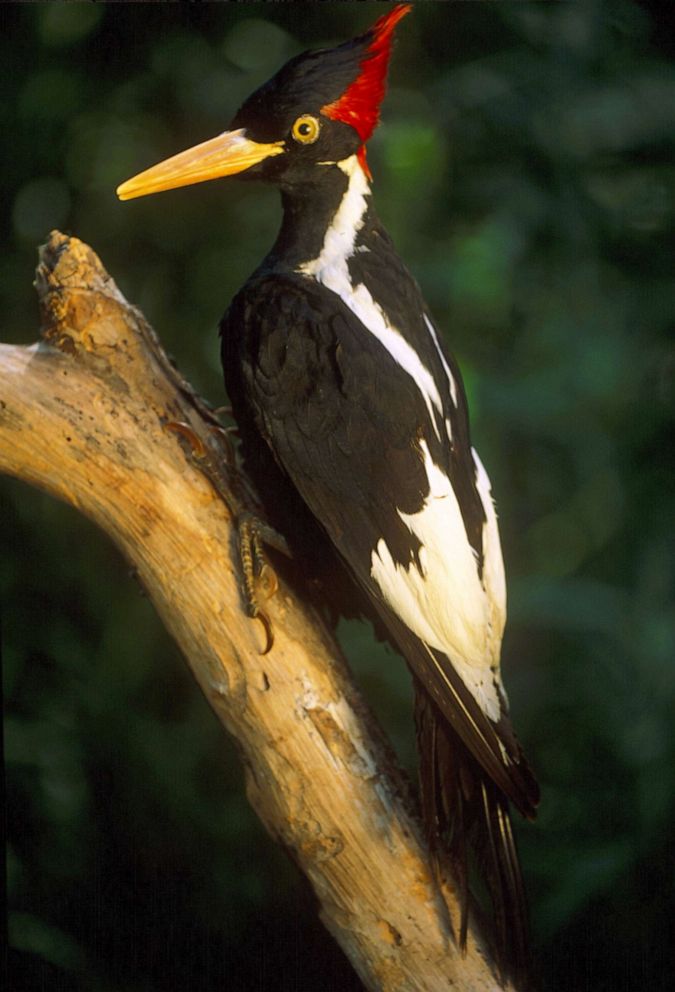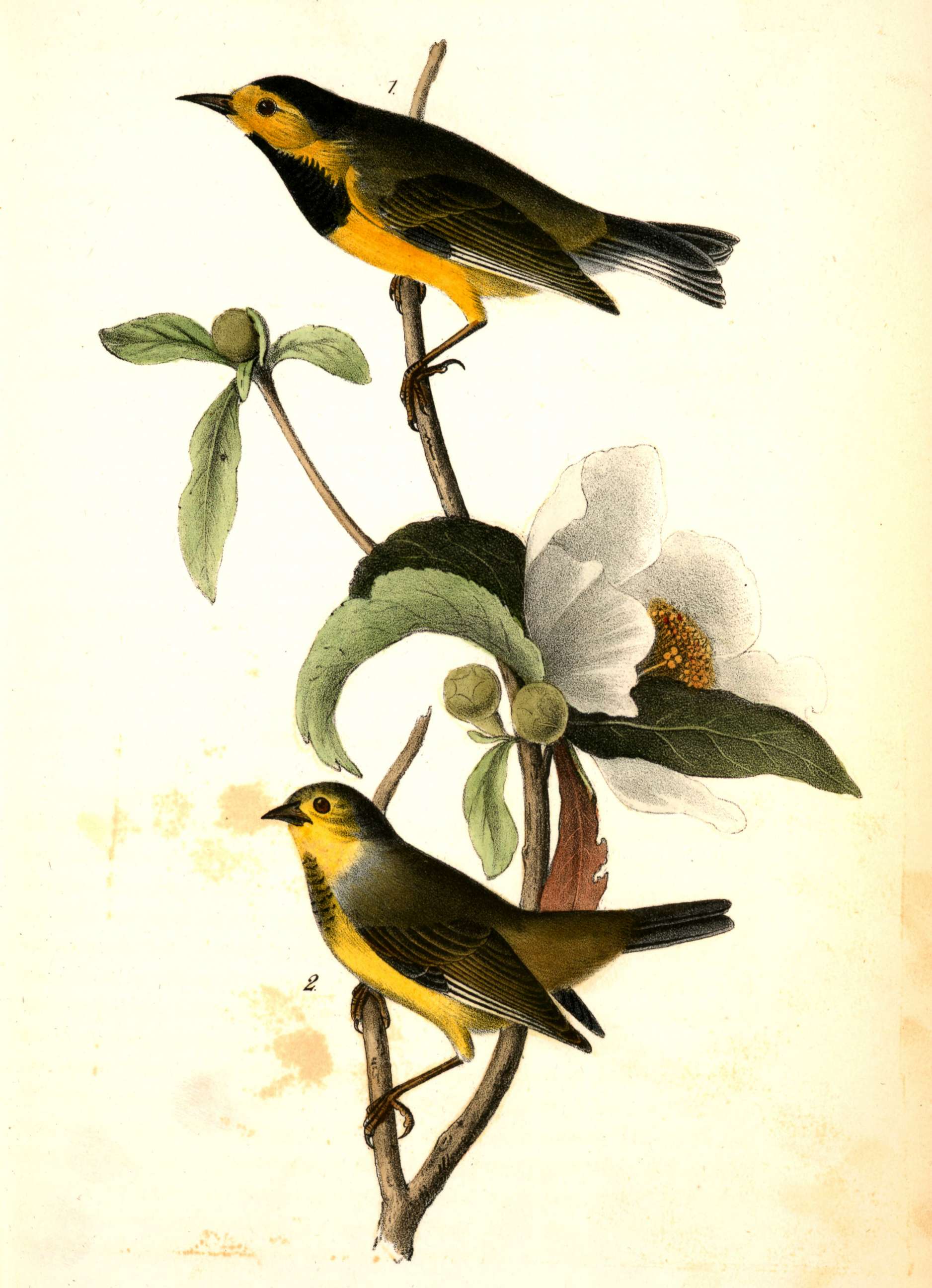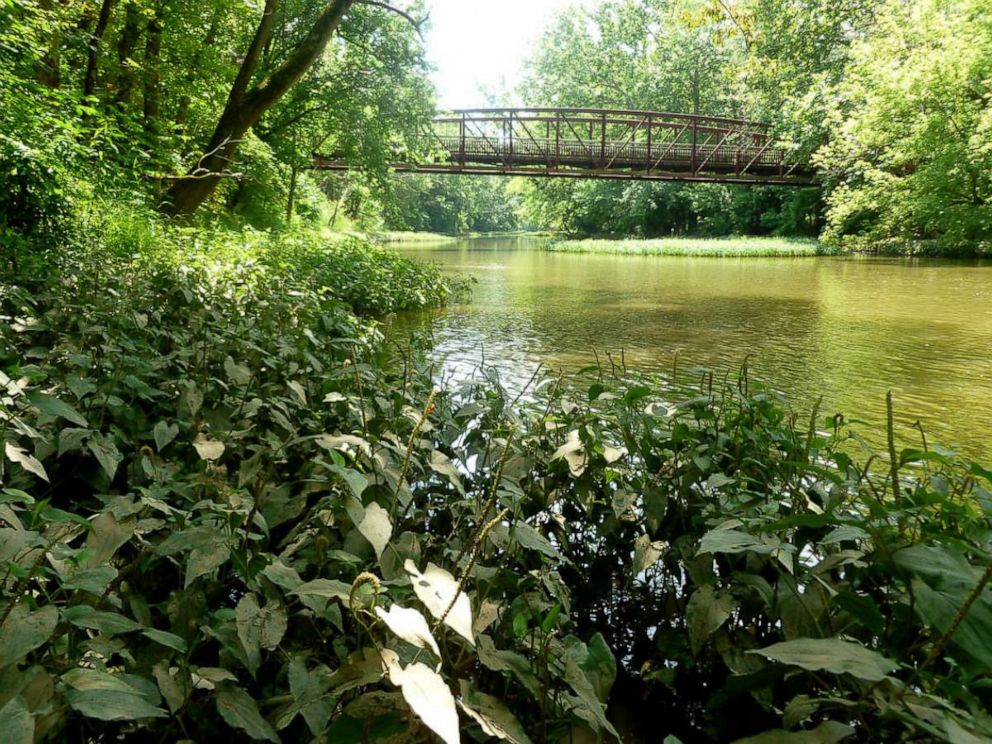23 species may be de-listed from the Endangered Species Act due to extinction. Here's what needs to be done to prevent further loss.
The Biden administration is being criticized for lack of urgency.
Species that once thrived in North America are are rapidly on the way to becoming extinct, and as conservationists work to prevent further loss, some are criticizing the federal government for not acting with the necessary urgency to combat the drastic declines.
The U.S. Fish and Wildlife Service was criticized constantly over actions taken during Donald Trump's tenure as president. In 2019, Trump's administration made changes to the Endangered Species Act, altering the requirements for how the government decides to add or remove species from the list of protected animals and limiting how much habitat must be protected. And even after Trump left office, lawsuits against the federal government continued to pile up over ESA decisions made by his administration.
Now, some conservationists are denouncing the Biden administration's perceived inaction to preserve biodiversity, saying that many more species are at risk of extinction should the current trajectory continue.
"The administration has been completely lukewarm on endangered species so far," Tierra Curry, senior scientists for the Center for Biological Diversity, a conservation nonprofit, told ABC News.
The Biden administration has also not set any plans in motion to reverse the changes Trump made to the ESA, Curry said.
On Sept. 29, the FWS proposed to remove 23 animals species and one plant species from the ESA's list of protected species due to extinction. About 650 species in the U.S. have likely been lost to extinction in the last several decades, according to the Center for Biological Diversity. A majority of the loss of species can be attributed to human activity, biologists say.
Here are some of the species that will likely lose protected status due to extinction:
Ivory-billed woodpecker
The ivory-billed woodpecker, a bird native to the Southeastern U.S. and known for its black-and-white plumage chisel-tipped bill, was last seen in 1944, John W. Fitzpatrick, director of the Cornell Laboratory of Ornithology at Cornell University, told ABC News.
The species is iconic to the bottomland forests and the extensive pine forests in the Southeast, but as humans began to clear the trees in the 1800s, populations of the bird, once distributed from Florida to Illinois to Oklahoma and Texas, began to decline drastically.
By the end of the 19th century, sightings of the "magnificent and very celebrated bird" was becoming rare -- so rare that people began to collect them for museums and private collections, Fitzpatrick said.
The ivory-billed woodpecker was re-discovered in the 1920s, and by the 1930s, researchers had taken interest in studying the bird. But the last documented woodpecker was last positively identified just before World War II ended.
Fitzpatrick says he believes that the FWS' proposal to de-list the ivory-billed woodpecker may be premature.

There have been reports of sightings of the bird from the 1950s to 1990s, and in the 1960s, scientists found an active nest in which a feather was recovered, Fitzpatrick said.
And as recently as this year, a researcher working in Louisiana and Mississippi obtained photographic and acoustic evidence of the bird, Fitzpatrick said.
Fitzpatrick said the reports may be false alarms, but the sightings are encouraging signs that the local ecosystem may be recovering.
"To take it off the list of endangered birds and declared extinct, even while there's ambiguity about that, is unnecessary," he said. "It's premature, and I think is counterproductive to what the Endangered Species Act is intended to do."
Freshwater mussels
Eight species of freshwater mussels -- all in the Southeast -- are among the list of species proposed to be taken of the endangered list. All of them -- the flat pigtoe, green-blossom pearly mussel, southern acornshell, stirrupshell, tubercled-blossom pearly mussel, turgid-blossom pearly mussel, upland combshell and yellow-blossom pearly mussel -- were last seen in the 1960s and 1970s, Andy Ford, endangered species biologist for the Tennessee Ecological Services, told ABC News.
By the time they received protection under the ESA, it was likely already too late to facilitate a recovery, Ford said.
"They were gone before we got a chance to really study them," Tyler Hern, hatchery manager for the Erwin National Fish Hatchery in Tennessee, told ABC News.
It is unclear just how local ecosystems were affected by the loss of these species of mussels, Matthew Wagner fish and wildlife biologist for the Mississippi Ecological Services, told ABC News. But muscles are critical to the water filtration in the rivers and streams, the experts said.
"You know when these things start to disappear out of our river you know something's bad," Ford said.

Populations likely died down as a result of heavy damming, which prevented male mussels' sperm from coming into contact with females downstream by ways of migrating fish, Wagner said.
Climate change may start to play a big role into the fate of other mussel species, Ford said. As temperatures in rivers and streams warm, it's unclear how that may affect these mussels' ability to survive.
While the eight aforementioned mussel species are in danger of being removed from the list of protected animals, the FWS has identified other mussel species that it may place under federal protection, Jennifer Koches, public affairs specialist for the U.S. Fish and Wildlife Service, told ABC News.
The Atlantic pigtoe, Canoe Creek clubshell, Pyramid pigtoe, Longsolid and Round hickorynut may soon qualify for protected status, Koches said. All five species are found in the Southeastern U.S.
Bachman's warbler
The Bachman's warbler, named by naturalist John James Audubon for his colleague and friend John Bachman, historically had a range from South Florida to Tennessee.
Audubon first described the bird in 1833, and just a century later, the species was almost wiped out of existence, Dirk Stevenson, a naturalist with a background in herpetology, told ABC News.
The exact mechanisms that caused the populations to disappear is unclear, Stevenson said. The possibilities could range from habitat changes, including where the birds bred and where they would winter.

But, researchers are confident that the perturbations of the habitats were anthropogenic, or as a result of human activity, Stevenson said.
Stevenson believes removing the Bachman's warbler's protected status is warranted because they were lost "a long time ago." The last confirmed sighting was in 1962 near Charleston, South Carolina, he wrote in a column in the Savannah Morning News last year. A number of unconfirmed sightings were reported in the 1970s, he added.
"It's a very upsetting realization that we had animals like this that we no longer do," he told ABC News.
More needs to be done by the federal government, advocates say
Conservationists are calling on the Biden administration to make swift actions to combat the growing problem of loss of biodiversity in the country.
Ten months into his presidency, President Joe Biden has not yet appointed a new director for the FWS, ideally someone who is dedicating funding and addressing the backlog of endangered species that are awaiting protection and also willing to fight to get funding for the species that are already on the list, Curry said.
"The agency needs leadership," she said. "They need to undo the harmful changes Trump made, and they really have to push the act forward. There are hundreds of species waiting to get on the endangered species list."
A 2016 report by the organization found that Congress provides just 3.5% of the funding that scientists from the FWS estimate is needed to recover species. Roughly 1 in 4 species receives less than $10,000 a year toward recovery, according to the Center.
Two proposed bills -- the Extinction Prevention Act and the Extinction Crisis Emergency Act -- would create four grant programs that would provide $5 million per year to fund crucial conservation work for each of the most critically imperiled species in the U.S. and would direct President Biden to declare the global wildlife extinction crisis a national emergency, respectively.
Recovering America's Wildlife Act would also provide $1 billion in funding to states, tribes and territories with struggling wildlife populations.
The already-1,800 species on the endangered list need recovery plans, and another 12,000 species have been identified as in need of some sort of conservation action, Curry said.
Part of the problem is how long it takes for species to received protected status, Curry said. When the Endangered Species Act was first passed in 1973, additions were almost immediate. Now, it takes about 12 years to get vulnerable species on the list, she said.

Brian Hires, public affairs representative for the FWS, said in a statement to ABC News that "the Service is working with diverse conservation partners to avoid having to make another announcement involving extinctions."
"We are also working to leverage our funding and resources to do the most conservation possible," he said. "This is done in part by identifying and protecting the species that need it the most and delisting species that no longer require protections."
Hires declined to comment on the criticisms from conservationists on the Biden administration.
The other species identified by the FWS last month include the Bridled white-eye, green, yellow and white tropical lowland forest bird from Guam; and the Little Mariana fruit bat, also known as the flying fox, last seen in 1968 in Guam;
The San Marcos gambusia, a 1-inch-long fish that gave birth to live young instead of laying eggs, was last seen in 1983, It lived in clear spring water from the headwaters of the San Marcos River in Texas and became extinct due to water overuse that depleted groundwater and spring flow.
The Scioto madtom, a small catfish found only in Big Darby Creek in Ohio, was last seen in 1957 but was not listed as endangered until 1975. Silt accumulation from dams and runoff caused its demise.



